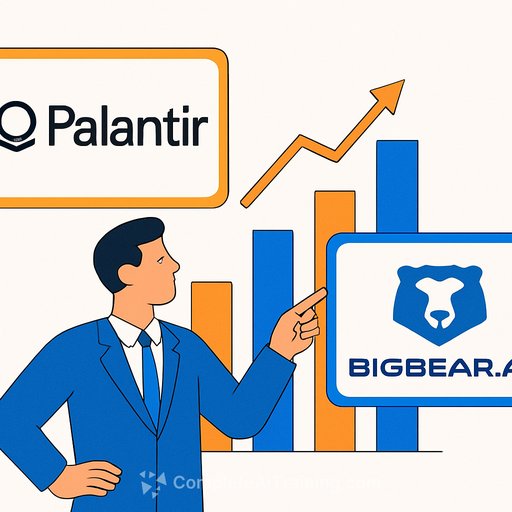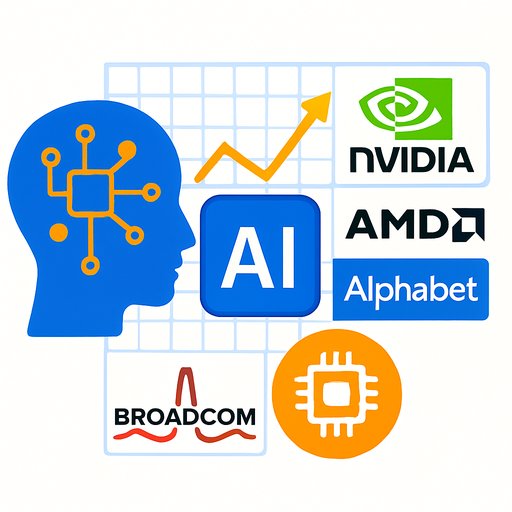Meta's AI Ambition and Financial Resilience: A Blueprint for Long-Term Value Creation
Meta is positioning itself at the forefront of artificial intelligence by pairing bold technological investments with disciplined financial management. As the company expands its AI infrastructure and metaverse efforts, its 2024 financial report reveals a strategy that balances heavy R&D spending with strong profitability and shareholder returns. This blend highlights how a leading tech company can pursue innovation while safeguarding long-term value.
AI Infrastructure: The Foundation for Future Leadership
Meta's 2024 financials show its clear pivot to becoming an AI-first organization. The company invested $37.26 billion in AI "supercluster" data centers like Prometheus and Hyperion, each packed with hundreds of thousands of NVIDIA H100 GPUs. These facilities are built to support next-generation AI models—such as Llama—and AI-powered products like Threads and Reality Labs.
Owning this in-house compute capacity reduces dependence on external cloud providers, cutting costs over time and giving Meta an edge in training large language models and generative AI tools. With Prometheus expected to house 600,000 GPUs, Meta’s scale matches that of peers like Google and Microsoft, enabling faster iteration and lower latency for AI applications while maintaining cost control.
Financial Discipline: Balancing Growth and Profit
Meta’s ability to fund this aggressive AI build-out while boosting profitability highlights its financial discipline. In 2024, revenue reached $164.5 billion, up 21.94% year-over-year, with net income rising 59.5% to $62.36 billion. This growth is anchored in Meta’s core advertising business, which continues to benefit from its dominant social media platforms and the global digital ad market.
The company's R&D spend hit $43.87 billion—27% of revenue—well above the tech industry average of 15–20%. Despite this, Meta generated $54.07 billion in free cash flow, a 23.32% increase from the previous year. Strong operating leverage and efficient cost management helped net cash from operations climb to $91.33 billion, proving Meta can sustain high investment levels without compromising financial health.
Capital Allocation: Innovation with Shareholder Returns
Meta’s 2024 capital allocation strategy reflects its dual focus on innovation and shareholder value. While $37.26 billion was invested in AI infrastructure, Meta also returned $35.2 billion to shareholders through $30.13 billion in stock buybacks and $5.07 billion in dividends. This 7.7% payout ratio remains conservative, preserving financial flexibility.
The balance sheet supports this cautious approach. With $43.89 billion in cash reserves and a debt-to-equity ratio of 0.27x—well below the tech sector average of 0.5–1.0x—Meta maintains low leverage and strong liquidity. Even as it raised $47.12 billion in long-term debt to fund its infrastructure, the company’s current ratio of 2.66x ensures it can comfortably meet short-term obligations.
The Long-Term View: Risks and Rewards
Meta’s AI investments are expected to yield returns between 2025 and 2029. The company forecasts revenue reaching $301.8 billion and earnings per share of $42.16 by 2029, driven largely by AI-powered products and increased metaverse adoption. These projections depend on successful scaling of AI tools and sustained user engagement, both of which Meta has experience delivering.
However, competition from deep-pocketed players like Google and Microsoft remains intense, and regulatory scrutiny around AI and data privacy could limit monetization opportunities. Meta’s financial strength and its early lead in open-source AI models like Llama provide some cushion against these risks.
What Investors Should Watch
- Free Cash Flow Growth: A 23.32% year-over-year increase in 2024 highlights operational efficiency worth monitoring.
- AI Product Adoption: Growth in users for AI tools such as Threads and Reality Labs will indicate whether investments translate into revenue.
- Debt Management: Despite low current leverage, rising interest rates could impact borrowing costs. Tracking Meta’s debt-to-equity ratio and interest coverage is essential.
Conclusion
Meta’s 2024 financial results illustrate a company that effectively balances ambitious AI investment with solid financial fundamentals. By funding large-scale AI infrastructure while maintaining profitability and shareholder returns, Meta is preparing for a leadership role in AI and metaverse ecosystems.
This approach offers investors a clear example of capital allocation done right—combining growth and risk management in a sector often criticized for short-term focus. As AI adoption grows, Meta’s financial stability and strategic investments could prove to be key advantages.
Your membership also unlocks:






